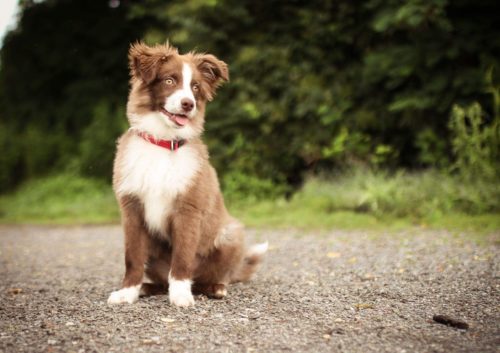Dogs and humans are similar in many ways including their tastes in food. If it were up to dogs, they would be nose deep in a bag of candy, despite the presence of hunger. As we know, this holds true for some humans as well. However, what dogs enjoy eating most may not be the healthiest options for them and occasionally may even be toxic. Chocolate is somewhat notoriously known for being toxic to dogs, but many do not know why or to what extent. As such, it can be helpful to know how chocolate consumption can affect your dog and what steps to take to keep him from finding any.
What is in Chocolate That is Toxic to Dogs?
There are two major components to chocolate that affect dogs negatively: caffeine and theobromine. Both caffeine and theobromine create similar reactions when consumed by dogs including fast heart rate, increased blood flow, diarrhea, vomiting, hyperactivity, and tremors. Caffeine and theobromine are included in a class of substances called Methylxanthines. Methylxanthines attach to receptors on the surface of cells and block the natural compounds that normally bind there.
Although this can affect humans, it affects dogs to a much larger and life-threatening degree. Chocolate generally contains a large amount of theobromine and much smaller amounts of caffeine. A common mistake dog owners often make is to assume that the quantity of chocolate is the only determining factor in whether their dog may be subject to high toxicity levels. The problem is that not all chocolates are created equal in terms of their levels of methylxanthines. This means that some types and brands of chocolate may be more toxic than others.
Is All Chocolate Toxic to Dogs?
Dogs are capable of handling some chocolate depending on the weight and size of the dog. In addition to weight, the type of chocolate can also produce different effects. This is because different types of chocolate contain different levels of methylxanthines. For example, unsweetened baker’s chocolate contains over 6 times as much theobromine as milk chocolate. On the canine toxicity meter, dark and bitter chocolate products are generally higher in toxicity and contain higher concentrations of both caffeine and theobromine. Whereas, milk and white chocolate are lower on the spectrum.
Products containing cocoa powder are also highly toxic to dogs including hot cocoa, chocolate milk, and pudding. To put it all in perspective, the ASPCA’s Animal Control Poison Center states that less than 4 ounces of milk chocolate is potentially lethal for small dogs. That being said, dogs that consume a small amount of chocolate, depending on the type and relative to their size, can process this on their own without a trip to the veterinarian. A good rule of thumb is to always contact a veterinarian if you suspect your dog may have consumed chocolate or products that contain cocoa and cocoa powder. It can sometimes take between 6 to 12 hours for your dog to start displaying symptoms of chocolate consumption. As such, it is advisable to monitor your dog frequently for any behavior changes, particularly erratic or hyper-active displays.
Tips to Prevent Canine Chocolate Consumption
Although it can be challenging, it is important for dog owners to restrict any access to chocolate products when it comes to their pups. Dogs can be quite crafty when they want to and as such, it is advisable to keep all products in storage cabinets that are elevated or that have locks or latches on them. Also, remember to keep an eye on any children or guests that may be present, reminding them to throw away any residual candy they may have. The holidays are a particularly important time to be vigilant in monitoring your home for any residual candy, cookies, chocolates, or sweets.
It is also a good idea to keep trash and garbage bins tucked away in cabinets or out of reach of your dog. Considering dogs are man’s best friends, it can be challenging to avoid sharing food that you may be eating with your dog. However, if you struggle with the desire to share a treat with your pup, you can always substitute a spoonful of peanut butter to satisfy his sweet tooth!




